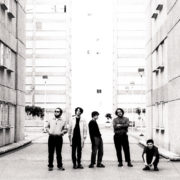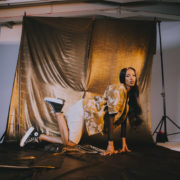Neo-Medieval Nightmare: Fashion’s Return to the Dark Ages

Last season was the “winter of our discontent”. Plagues ravaged the land as the wealthy lorded over a desperate population. Society destabilised and shadowy oligarchies grew in influence, eclipsing the power of governments. Popular revolt raged in our cities, suppressed by authorities high on impunity. No, this isn’t the Black Death and the crisis of the later middle-ages. It is 2021. The utopian dream we were promised has turned into a Neo-Medieval nightmare.
In response to widespread political dystopianism, we are seeing a resurgence in medieval aesthetics across fashion and music. Chainmail, plate armor, and fantasy jewellery are iron-hot, with artists like ARCA, Lil Tracy and Caroline Polachek embracing looks straight out of Luc Besson’s 1999 cult-classic Joan of Arc: The Messenger.
“It feels like music is returning to some kind of medieval folk medium where we are bards again, self-promoting in the streets or taking the occasional commission from patrons”
– Caroline Polachek
When we look into fashion’s crystal ball, do we see a return to the dark ages forming?
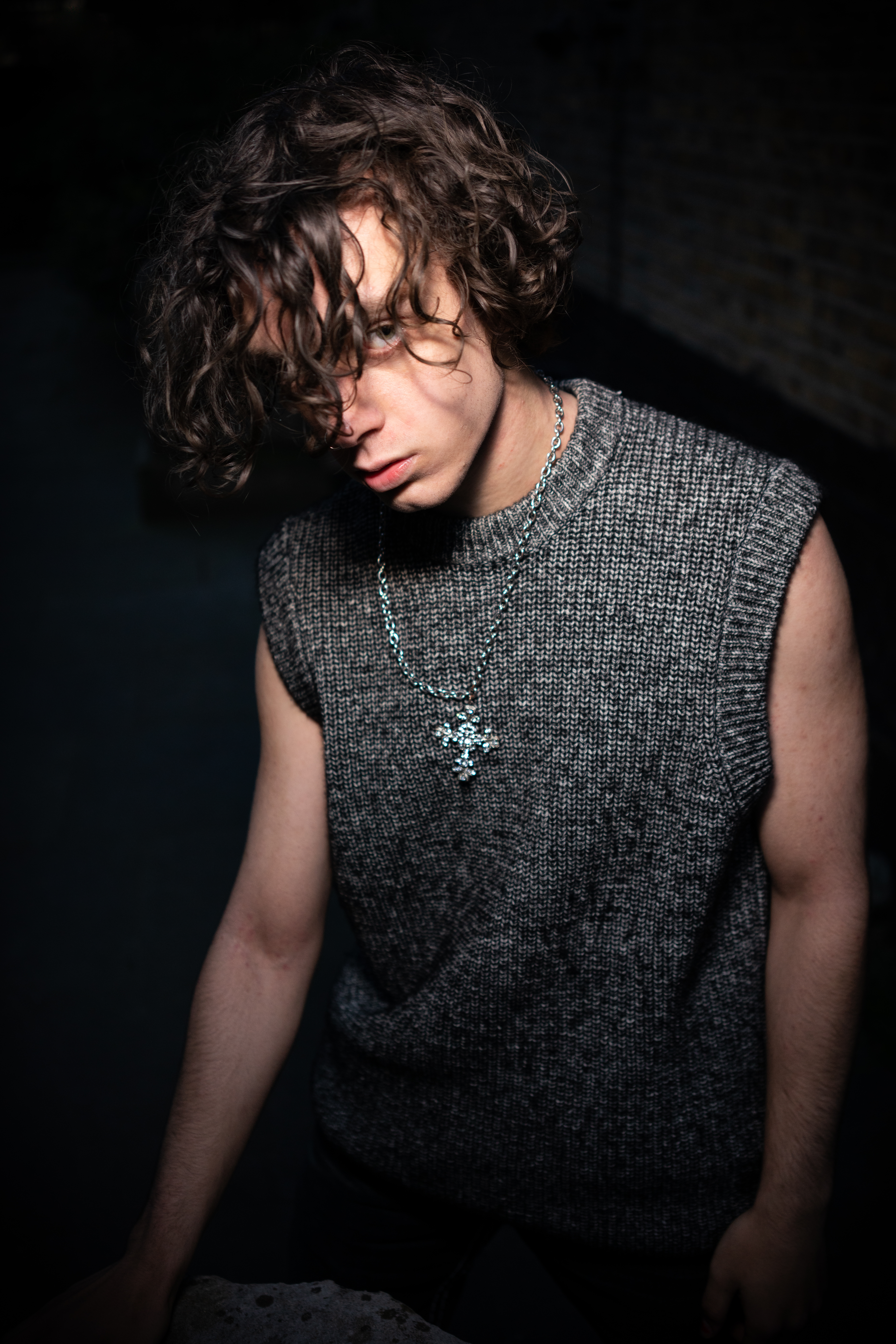
At Paris Fashion Week, Undercover evoked Throne of Blood, an adaptation of Shakespeare’s Macbeth, as Jun Takahashi rained arrows down on models in padded under-armour and jerkins. Demna Gvasalia’s fall collection for Balenciaga was a fully playable fantasy Otherworld, presented in a rendered environment reminiscent of Skyrim. 3D models in combat-ready poses sported knee-high chevalier boots of interlocking plate armor. In perhaps the most ostentatious show of medieval fanfare, Hedi Slimane’s “army of moody princes” invaded the 15th-century Château de Chambord for Celine’s Teen Knight Poem: a courtly fairytale replete with riders on black horses and Celine branded banners.
In our quest to understand this movement, a look at the political climate might clear the fog. Big Tech’s power has undermined traditional democracy, resulting in neo-feudalism. Convenience culture demands an underclass of gig-economy workers, as stagnant minimum wages and shrinking streaming payouts compare to modern-day serfdom. Disinformation sees post-truth pariahs manipulate the masses, plunging us back toward pre-enlightenment ideas. As progressive values come under threat, the spectre of militancy and fascism haunts society. Should we ready ourselves for battle?
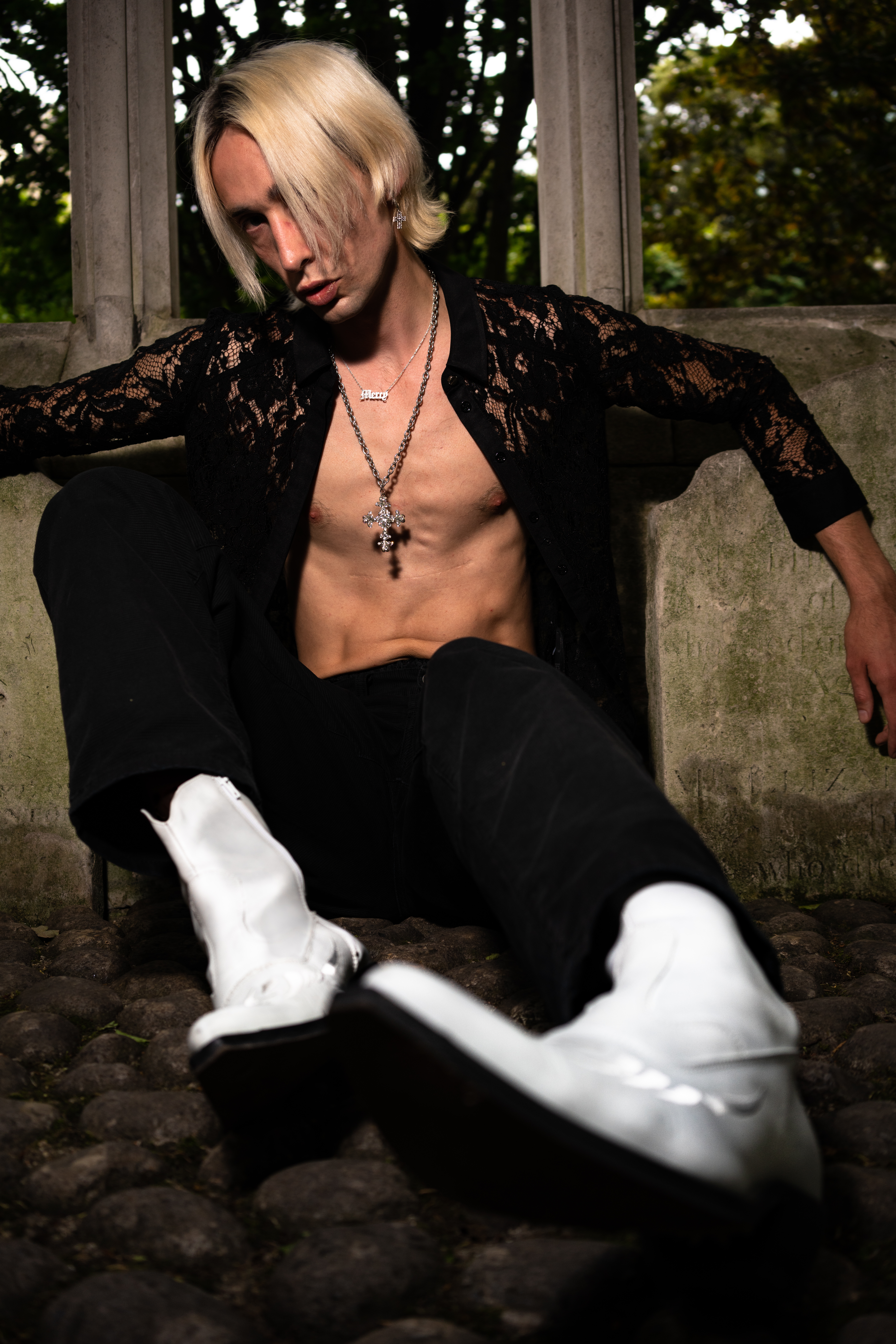
As the Black Death faded from 16th Century Europe, a crisis emerged from the growing gap between wealthy and poor, causing widespread popular uprisings. Fast forward to 2021, and pandemics and presidencies are the plagues and pestilences of our age. Modern crises of jobs, healthcare and the environment grow worse each year. The technological promises of our future turned out to be hollow. We face our fate not as care-free “digital nomads”, but instead, as digital peasants, toiling the landscape of platform capitalism to generate revenue for algorithmic overlords.
Oligarchy has become the new normal. Many of us have had our lives uprooted by this pandemic, while the ‘big five’ of Facebook, Google, Amazon, Microsoft and Apple have profited £5.5 Trillion. These companies’ combined value has overtaken that of every country on earth other than U.S.A, China, Germany and Japan. Professor Jeremy Pitt has likened today to the aftermath of the medieval plagues, where surviving aristocracy swept up property of deceased neighbors, creating large estates that were “too big to fail’. In the aftermath of COVID-19, we see the same pattern; Big Tech and corporate monopolies hoover up assets, industries, and infrastructure. Author Evgeny Morozov likens this dominance to “a hyper-modern form of feudalism”. Like feudal lords of old, they hoard this wealth where it lies dormant, unable to better society.
World renowned economist Yanis Varoufakis calls this ‘Techno-Feudalism’. Corporations have become too large to be regulated or controlled by the State. They refuse to pay taxes and flaunt crucial environmental and employment regulations. The inevitable outcome is these powerful corporations supersede the State to form their own governments, claim territory, and organise militarily. Accelerationist philosopher Nick Land and Paypal co-founder Peter Thiel actively pursue this reality. Their hyper-capitalist movement towards a ‘Dark Enlightenment’ is closely linked to the resurgence of the alt-right and neo-fascism. Their vision for our future is bleak.
In Medieval artworks, like manuscripts and stained-glass windows, authorities exercised power over the people. They purposefully depicted them in lowly clothing as a way to enforce social hierarchy through dress. A humble identity for the people was designed to discourage challenges to the class structure. In truth, the peasantry in Medieval times sought many ways to express themselves through dress. Archaeological finds from England show that people accented their most prized possessions to give them a sense of personhood. Artefacts show clothing and accessories with decorative detailings. Historian Sally Smith frames this as a resistance through dress to the enforcement of class hierarchy. The people rejected the elites and the hypocrisy of ‘dressing appropriately’. This invoked anger and distrust, as recorded in 1365 by John of Reading:
“The empty headedness of the English who remained wedded to a crazy range of outlandish clothing. They began to wear useless little hoods and extremely short garments which failed to conceal their arses or their private parts . . . these misshapen and tight clothes did not allow them to kneel to God or The Saints”


Consider the prevalence of imagery today that venerates the conformist, the nondescript and humble. Mark Zuckerberg’s rise and grind uniform of plain trousers and a grey t-shirt, and the ensuing attempt to sell you this sociopathic idea of cool. Facebook’s allegra style of illustration reduces individuals down to innocuous, pastel-coloured typecasts. It depicts not a diverse society “warts and all”, but a cold, corporate apparition. It is posturing, a form of false diversity now popular in cities like London and San Francisco where startup industries rapidly replace real communities. Allegra is the visual language of gentrification. Through a neo-medieval lens, it is an assault on the individual imagination.
When softer forms of resistance proved inadequate, medieval people weren’t afraid to resort to violence. Infamous poll taxes and a period of serial tax evasion by the English nobility led to The Peasants Revolt in 1381. As part of census counts, tax collectors routinely molested women to ascertain their virginity; a crude test for marriage status and tax eligibility. The people of Brentwood did not take the injustice lightly. Citizens forcefully ejected the tax commissioner and his bodyguards. Within days, fires raged in the streets, and six tax collectors had been beheaded. Coordinated uprisings burst out throughout Essex, Suffolk, Norfolk and Kent under the symbolic leadership of a working class man, Walter Tyler.
While Tyler’s name has rung down the ages, lesser known is that the participants in his revolution were not actually ‘peasants’. They were a highly organised and democratic force of revolutionaries. Chroniclers of the time, fearing public support for those challenging the system, misrepresented them as a problematic rabble. In truth, these were professional people with an agenda put together by leading members of local communities. Rather than destroy, they were looking for a fair stake in the society they had built. It is history, written by the winners, that painted working-class hero Walter Tyler and his noble march on the capital as nothing more than a Peasants’ Revolt.
Fashion born from the style of working people is often appropriated by the rich. In the Medieval period too, techniques for good dress, borne of necessity, found their way into the closets of the wealthy. The ‘puff-and-slash’ style of jacket, as made famous in the Hans Holbein portrait of Henry VIII, was copied from German Landsknecht mercenaries the young King had hired to fight his campaigns. Waistcoats and jackets would be slashed across the front revealing puffy linings underneath, giving a freer fit and a daring, distressed finish. The flamboyant Landsknechts would wear war-skirts into battle, thought to have inspired the knee-length skirts seen on the King in other paintings. These mercenaries pioneered their looks while in the service of cash-strapped nobles, who paid in silks and clothes instead of gold or coinage. When too small to wear, the men would ‘puff-and-slash’ garments, stretching fabrics out to fit their larger frames. Much like pre-distressed jeans today, clothiers began implementing the look on purpose – not for function, but for fashion.
In the 1990s, another working class man made his way to London. It was a time of cultural and creative malaise, presided over by an out-of-touch establishment. The daring designs of Lee Alexander McQueen shook up the bourgeoisies. Maximalist creations from the depths of his imagination borrowed from an overlooked folkloric heritage. McQueen’s Joan, from 1998, typifies the era. Flowing evening gowns and shawls of mysterious metallic material adorned models. Armored gloves and silver Knight’s helmets complemented sheer silhouettes, embodying a spirit of militant feminism. Like Walter Tyler and Joan before him, McQueen was branded a revolutionary. Like them, he paid the ultimate price for his revolution, tragically taking his own life by hanging in 2010.
McQueen’s work continued the lineage of Punk style borne by Vivienne Westwood, who had been experimenting with medieval silhouettes since her 1988 collection, Time Machine. Articulated metallic jackets and corsets with removable sleeves were heavily inspired by the Knight’s armour. Playing on a complicated symbolism, Westwood and McQueen disarm the Knight in our imagination. The well-funded, masculine military machine is remade in female form, representing feminine power over patriarchy. The use of delicate cloth to engineer protective armour represents the triumph of beauty over reason.
We are drawn to romantic narratives because they help to clarify our confusing panorama of political and cultural events. We look to the medieval as another world where we can find escape. We find this in Westwood’s iconographic fantasy jewellery and gothic corsets, now highly coveted among a generation newly spellbound by the style.
“Made a hundred racks yesterday, bought a Vivienne Westwood chain”
– Lil Tracy
In an over-branded world, there is originality to be found in the folkloric. Championed by a new wave of artists and designers like Koral Sagular and Dilara Findikoglu, they incorporate medievalry into collections that celebrate cultural maximalism. By returning to Medievalism, fashion offers us the perfect antidote to “the Facebook style”: the flat-white minimalism, influencer-core and corporate art style that dominated the 2010s.


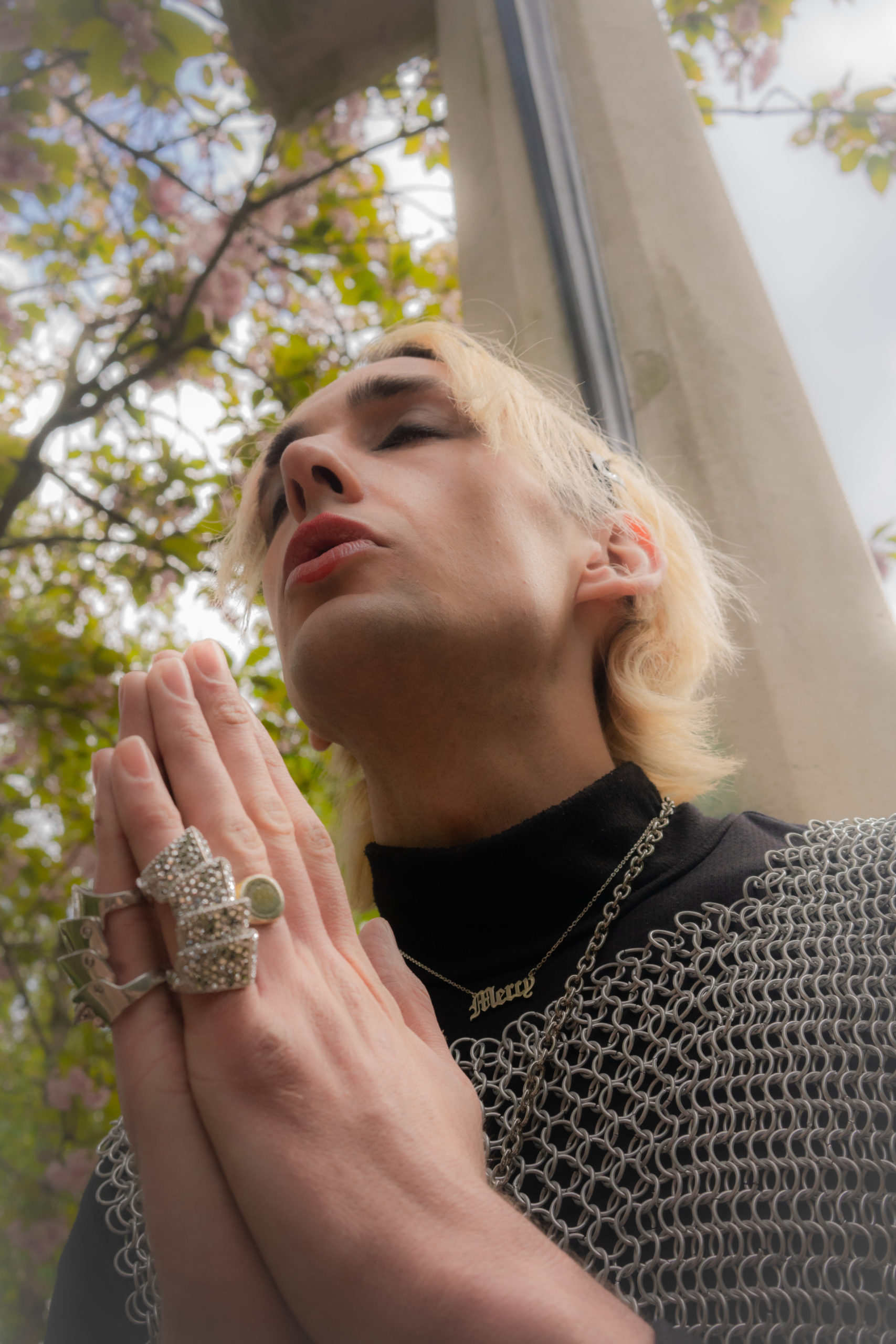
Words & Creative Director Ed Maurice Hartley
Photographer Grey Byron (Outdoor Editorial)
Assistant Photographer & Make Up Alison Holmes
Stylist Mercyboyz
Model 1 Mercy
Model 2 Alex
Model 3 Grey
Discover more from GUAP’s Fashion section here




![ZINO VINCI’S ‘FILTHY & DISGUSTING’EP BRINGS YOU TO THE CORE OF THE ARTIST [@ZinoVinci]](https://guap.co/wp-content/uploads/2023/10/Zino-4.jpg)

